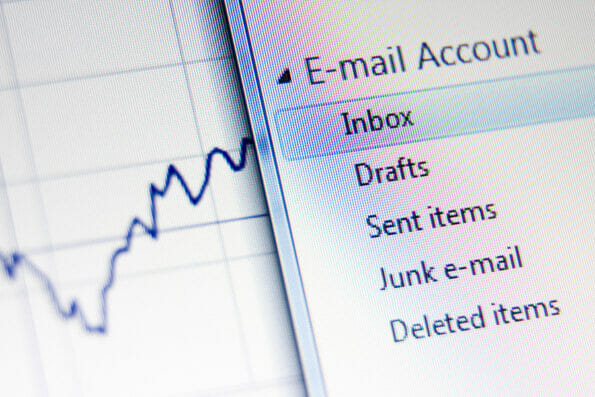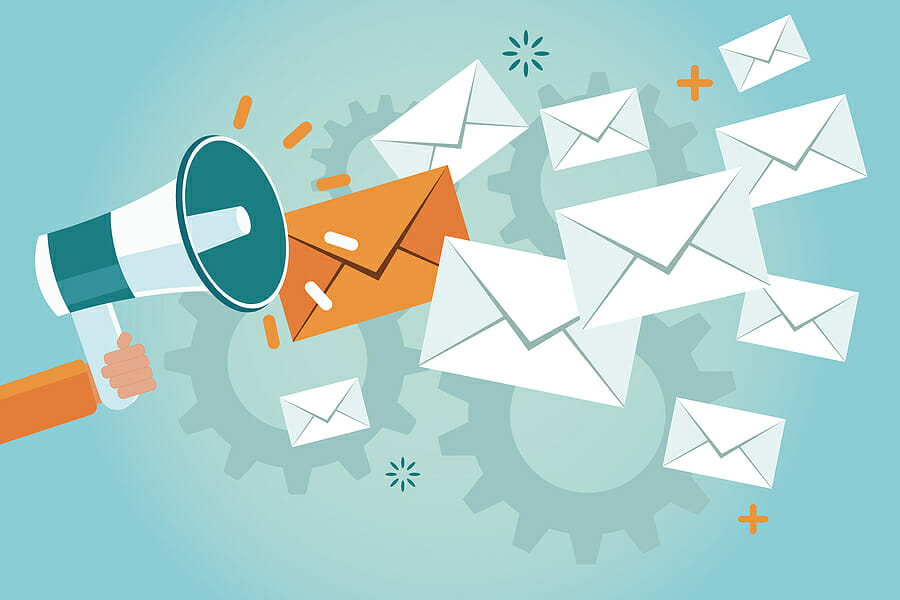For modern businesses, it’s more challenging to achieve success than ever before. The state of the global economy has narrowed the margins for error, putting increasing pressure on businesses to reach sustainable growth. At the same time, consumer expectations are changing, and companies also need to offer more personalized customer experiences to stand out from the crowd.
To generate recurring business and build strong customer relationships that will drive growth, it’s natural that companies should turn to digital marketing channels, and email marketing in particular, as an efficient route to success. However, enacting a successful email marketing campaign can be deceptively difficult.
When dealing with customers at any considerable scale, email marketers have a wide variety of variables to take into account when performing send-outs, as subscribers can vary enormously in terms of behavior and engagement. To micromanage each customer is a near-impossible task. This is why automating email marketing functions is pivotal to achieving true success with campaigns.
What is automation in email marketing?
Email marketing automation refers to the automatic sending of marketing emails to your subscribers. Marketers can use automation to handle single emails or series, depending on the situation. Singly email automation is typically more appropriate for short-term, limited-time events, while series are more fitting for nurturing relationships and warming subscribers up for a larger event, such as a seasonal sale, for instance.
To send sequences of emails to subscribers automatically, marketers can set up workflows using their chosen email marketing platforms. Email workflows are pre-determined email sequences that go out to subscribers in response to specified triggers. There are a wide variety of different events and behaviors that can be used to trigger an email workflow.
Triggers vary from one company to the next, however, it is advisable to establish workflows around key moments of opportunity in the customer journey. These moments can be determined using data and analytics to find out where customers most commonly diverge from the path to conversion.
How does automation affect email marketing success?
Email automation can significantly improve the success of email marketing initiatives. These include the following:
- It contributes to engagement building
One of the most common use cases for email automation is lead nurturing. With email automation, you can set up email sequences to go out when a user displays interest in your brand, for example by subscribing to your newsletter or visiting landing pages on your site.
In these instances, email automation allows you to strike while the iron is hot by immediately nurturing that interest. This helps to build audience engagement and creates momentum that carries them along in their customer journey. Lead nurturing is all about facilitating natural transitions between different stages of the journey, is this is something that email workflows do exceptionally well.
- It prevents abandonment
Email automation can also play an important role in helping you to avoid one of the major pitfalls of e-commerce – abandonment. Customers frequently browse online stores and even put items in their carts only to abandon them moments before conversion. Needless to say, this represents an enormous opportunity being wasted.
With email automation, however, you can salvage these situations. By setting up workflows to address cart abandonment or browse abandonment, for instance, you can give indecisive customers the encouragement they need to take the final step of the customer journey. This yields higher conversion rates, which means more revenue and a better return on investment for your email marketing efforts.
- It helps you to revive dormant leads
Another issue that marketers frequently encounter is loss of engagement. Subscribers often stop interacting with brand emails, and there is a multitude of potential reasons for this. While it’s not possible to reengage every subscriber, many simply need a timely reminder of the value that your brand can bring to them.
By setting up automated email sequences that correspond to specific engagement levels, you can ensure that subscribers receive these reminders at the right time, thereby reinvigorating their relationship with your brand. This helps you to achieve more traction with your copy, and likely achieve a greater conversion rate going forward.
Using email automation effectively
To use email automation effectively, it is essential to leverage data as much as possible. Specifically, this means tracking user behavior on your website, as well as monitoring your key email engagement metrics. The former can be done using site analytics, while you can use your email marketing platform to achieve the latter.
When constructed on solid user data, email workflows can allow you to reach subscribers at the critical junctions of their journey with the exact message they need. This helps to create a more cohesive customer experience.

By the same token, automated emails should be as personal as possible. While data-based workflows will send emails that are relevant to subscribers, using merge tags will allow you to include information like the recipient’s name in the email. This creates a much more resonant experience, allowing you to automate email processes without sacrificing the human connection aspect.
Conclusion
Modern businesses face many different challenges, and digital marketing channels offer the best chances of success, email marketing most of all. That said, achieving true success in email marketing is no mean feat, and it requires a careful approach on your part. By leveraging data and maximizing the functionality of your email marketing platform, you can utilize email automation effectively to generate a significantly greater return on your email marketing initiatives.
Image Source: BigStockPhoto.com (Licensed)
Site Disclaimer
The Content in this post and on this site is for informational and entertainment purposes only. You should not construe any such information or other material as legal, tax, investment, financial, or other advice. Nothing contained on our Site constitutes a solicitation, recommendation, endorsement, or offer by HII or any third party service provider to buy or sell any securities or other financial instruments.
Nothing in this post or on this site constitutes professional and/or financial advice. You alone assume the sole responsibility of evaluating the merits and risks associated with the use of any information or other content in this post or on this site.
You recognize that when making investments, an investor may get back less than the amount invested. Information on past performance, where given, is not necessarily a guide to future performance.
Related Categories: Work, Reviews







